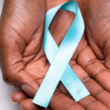Ear wax removal is a topic surrounded by many misconceptions and myths. Understanding the science behind ear hygiene and debunking these myths is essential for maintaining good ear health. This article explores the common myths about ear wax removal and provides verifiable information, research, and facts to clarify these misconceptions.
Ear wax, or cerumen, is a natural substance produced by glands in the ear canal. It serves several important functions, including:
- Protection: Ear wax acts as a barrier, preventing dust, debris, and microorganisms from reaching the delicate structures of the inner ear.
- Moisturization: It helps keep the skin of the ear canal moist, preventing dryness and irritation.
- Self-Cleaning Mechanism: The ear has a self-cleaning process where ear wax naturally moves from the inner ear to the outer ear, carrying with it dead skin cells, dirt, and other particles. This natural migration helps keep the ear canal clean and free of obstructions.
Despite these benefits, many people misunderstand ear wax and its removal, leading to the proliferation of myths and potentially harmful practices.
Myth 1: You Should Remove Your Ear Wax Daily
Fact:
Daily ear wax removal is unnecessary and can be harmful. The ear is a self-cleaning organ, and removing wax too frequently can disrupt this natural process and lead to irritation or infection.
- Research and Evidence: A study published in the Journal of the American Academy of Audiology found that routine ear cleaning can increase the risk of ear canal damage and infections . Over-cleaning can also stimulate the glands to produce more wax, potentially leading to a blockage.
Why It’s a Myth:
The belief that daily cleaning is necessary stems from a misunderstanding of ear wax’s role. While personal hygiene is important, the ear’s self-cleaning mechanism is usually sufficient to maintain cleanliness.
Myth 2: Cotton Swabs Are the Best Way to Remove Ear Wax
Fact:
Cotton swabs are not recommended for ear wax removal. Using them can push wax deeper into the ear canal, causing blockages and potentially damaging the eardrum.
- Research and Evidence: A study in The Laryngoscope highlighted that cotton swabs can lead to impacted ear wax and increase the risk of injury to the ear canal . Many healthcare providers warn against their use for this reason.
Recommended Practices:
- Softening Solutions: Over-the-counter ear drops containing hydrogen peroxide or saline can help soften ear wax, making it easier to remove naturally or with professional assistance.
- Professional Cleaning: If necessary, seek help from a healthcare provider to safely remove impacted ear wax.
Myth 3: Doctors Recommend Ear Candling
Fact:
Ear candling is not a scientifically supported method for ear wax removal and can be dangerous.
- Research and Evidence: A report from the American Academy of Otolaryngology states that ear candling does not effectively remove ear wax and can cause serious injuries, including burns and ear canal blockages . The practice is based on the false premise that heat from a candle creates a vacuum to extract wax, which lacks scientific validation.
Why It’s a Myth:
Ear candling is often marketed as a natural remedy, but its risks far outweigh any potential benefits. Medical professionals strongly advise against this practice.
Myth 4: Using Ear Drops Every Day Cleans Your Ears
Fact:
Regular use of ear drops is unnecessary for most people and can disrupt the ear’s natural balance.
- Research and Evidence: Frequent use of ear drops can irritate the ear canal and disrupt the natural production of ear wax, according to studies in otolaryngology journals . Ear drops should be used sparingly and primarily when experiencing symptoms of ear wax buildup.
Best Practices:
- Occasional Use: Ear drops should be used occasionally, as needed, rather than as a daily routine. If you experience persistent ear problems, consult a healthcare provider.
Myth 5: Only a General Practitioner Can Remove Your Ear Wax
Fact:
Ear wax removal can be performed by various healthcare professionals, including audiologists, otolaryngologists, and trained nurses.
- Research and Evidence: A study in the British Journal of General Practice found that ear wax removal can be effectively performed by trained healthcare providers other than general practitioners . These specialists often have more experience and specialized equipment for safe wax removal.
When to Seek Professional Help:
- Symptoms of Blockage: If you experience symptoms such as hearing loss, pain, or a feeling of fullness in the ear, seek professional help rather than attempting to remove the wax yourself.
The Verdict
The ears have a remarkable ability to clean themselves, and many interventions for ear wax removal are unnecessary or potentially harmful. Understanding the natural role of ear wax and following safe practices can help maintain ear health and prevent complications.
- Avoid Over-Cleaning: Let your ears’ natural processes do their job. Over-cleaning can lead to irritation and increased wax production.
- Seek Professional Help When Needed: If you suspect a blockage or have persistent ear issues, consult a healthcare provider for safe and effective treatment.
In conclusion, by debunking these myths and understanding the science behind ear wax removal, individuals can make informed decisions about their ear hygiene and protect their hearing health.





